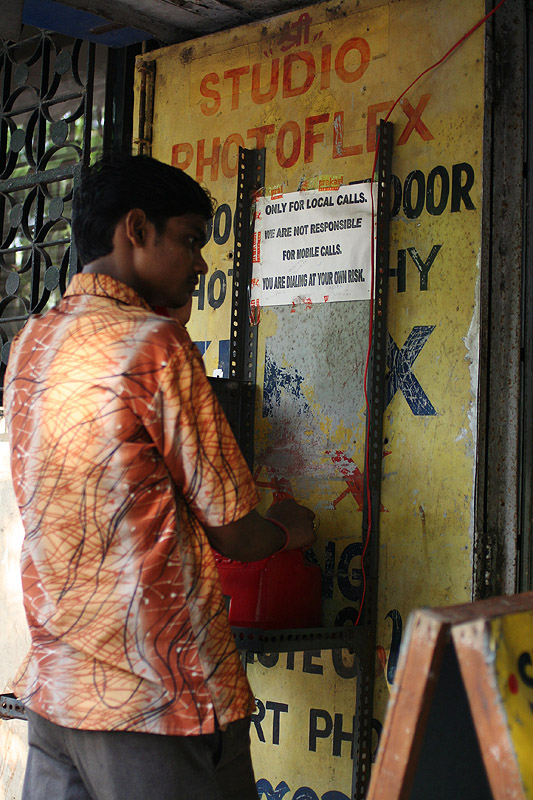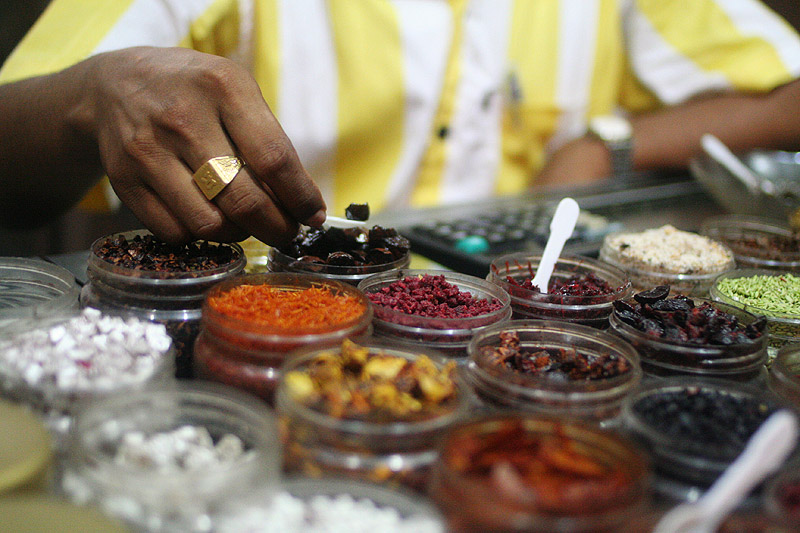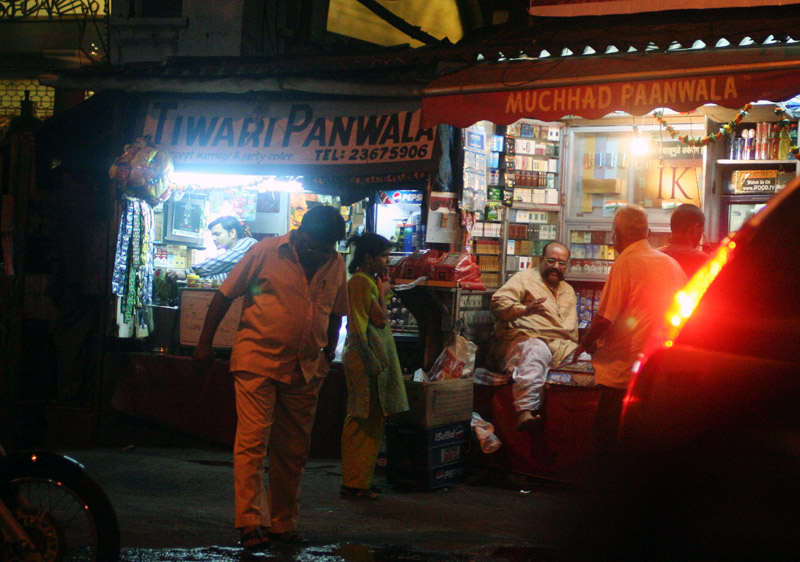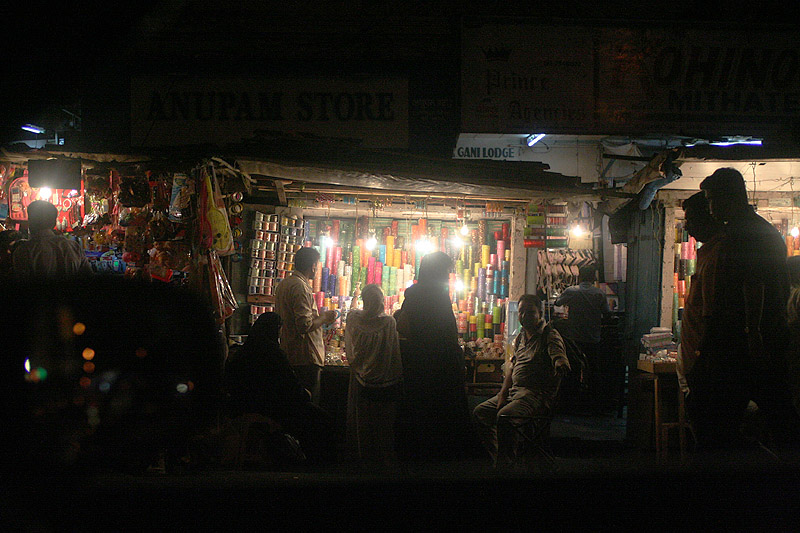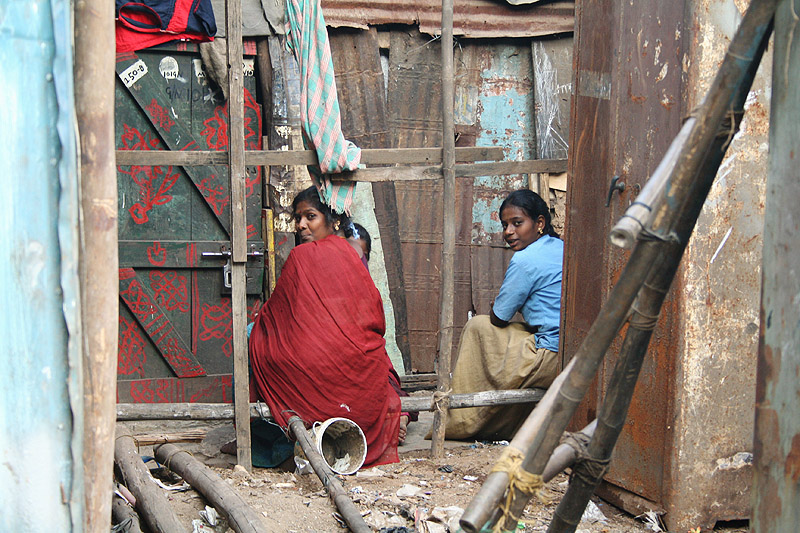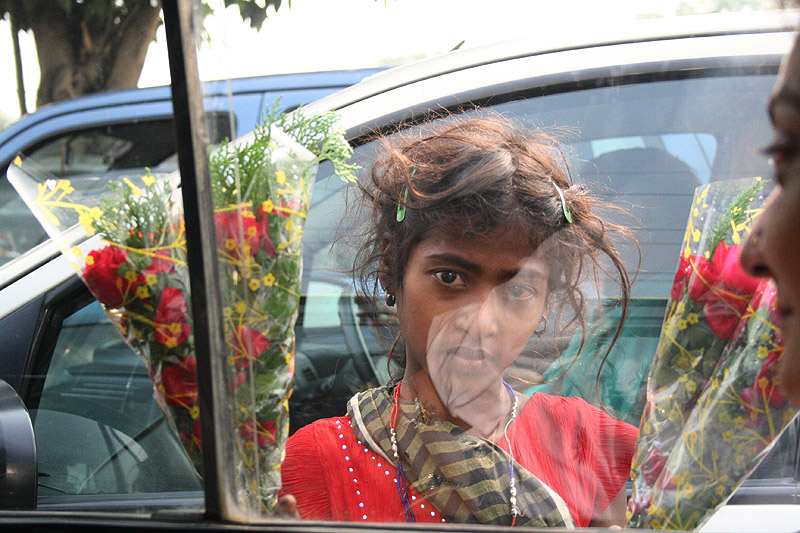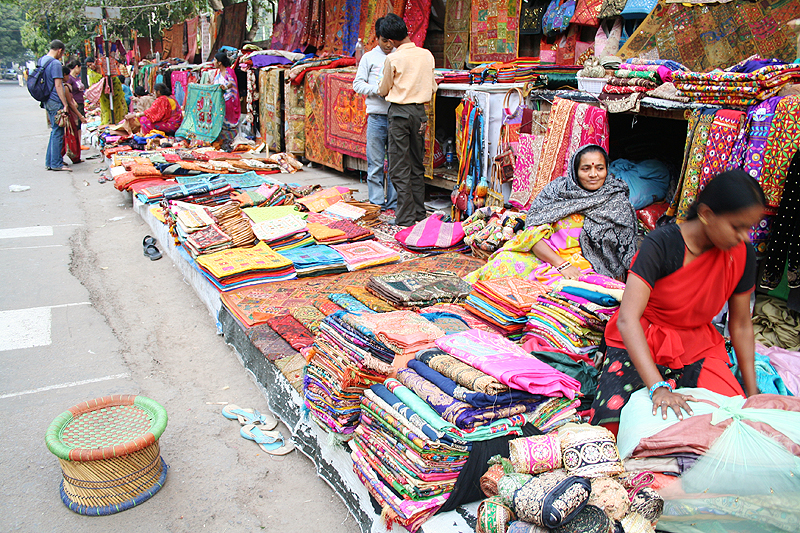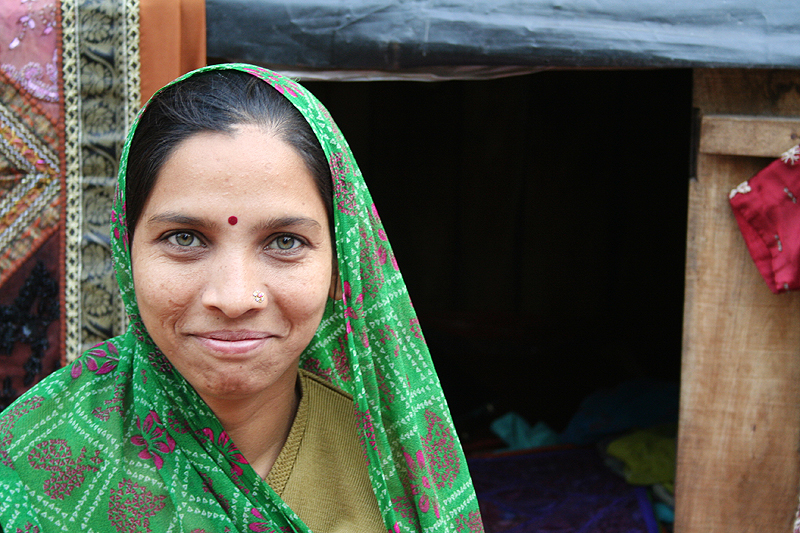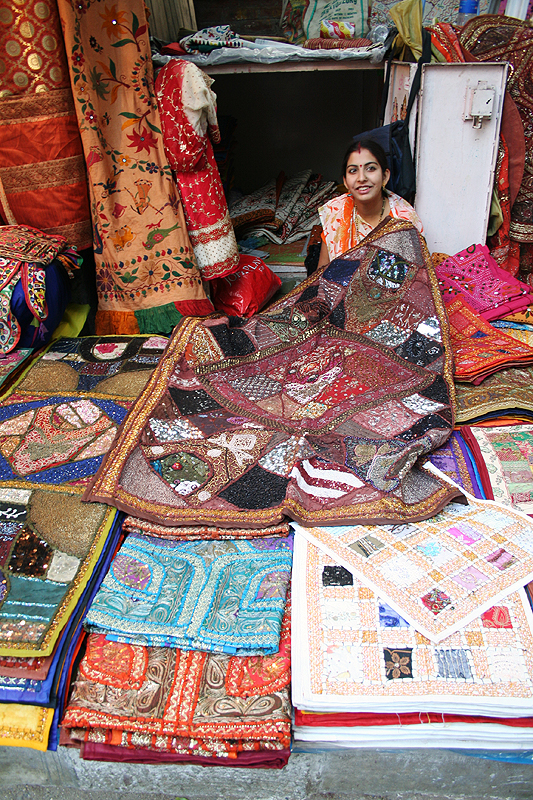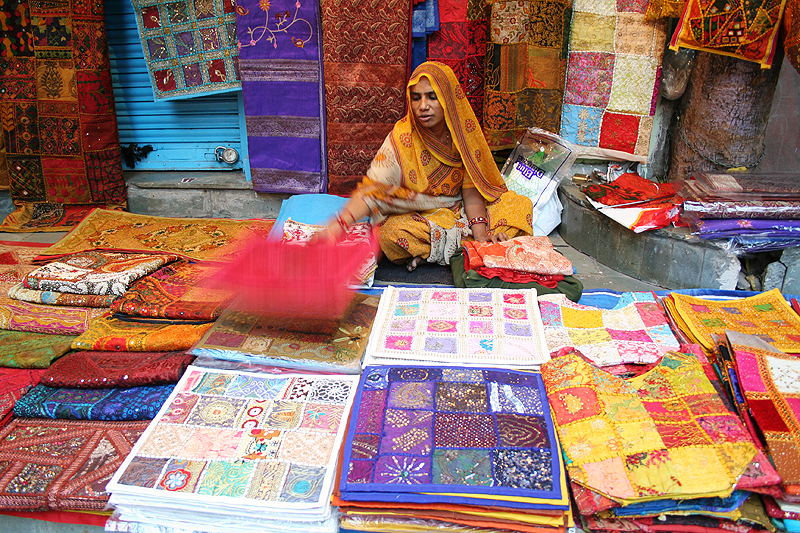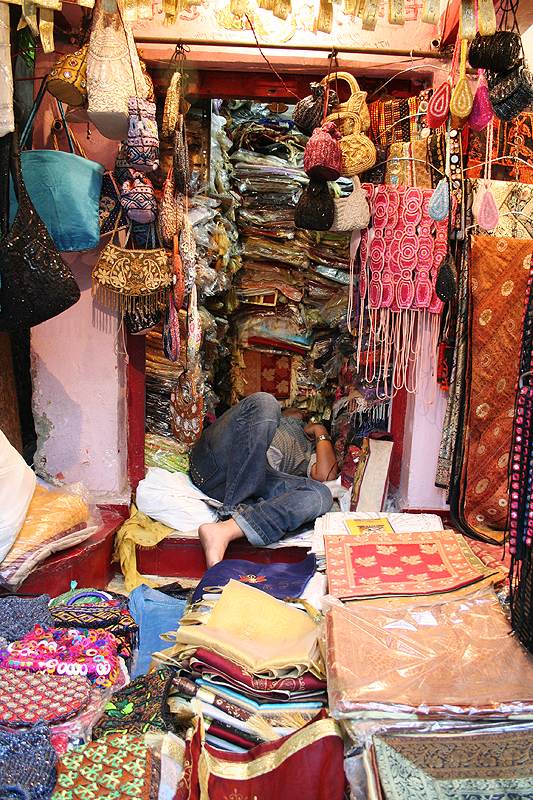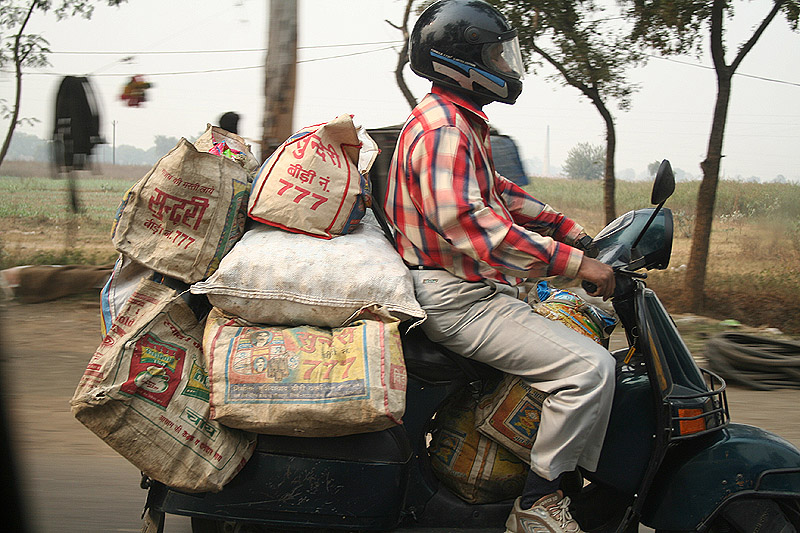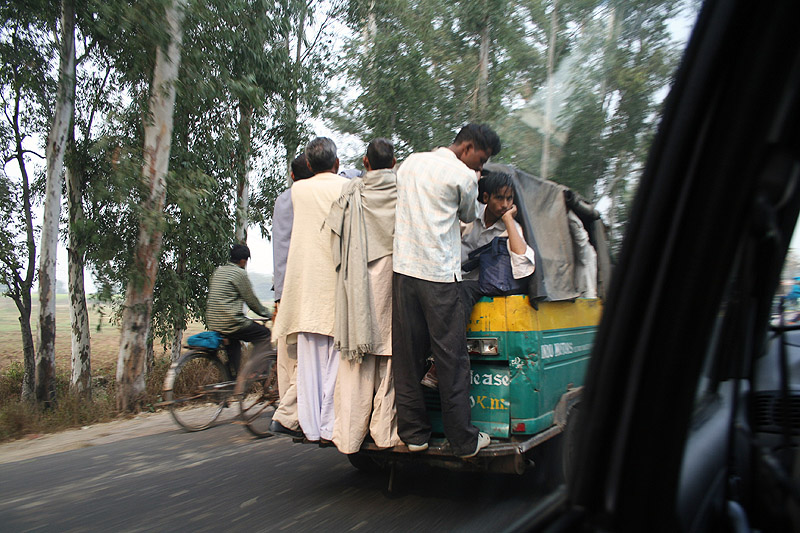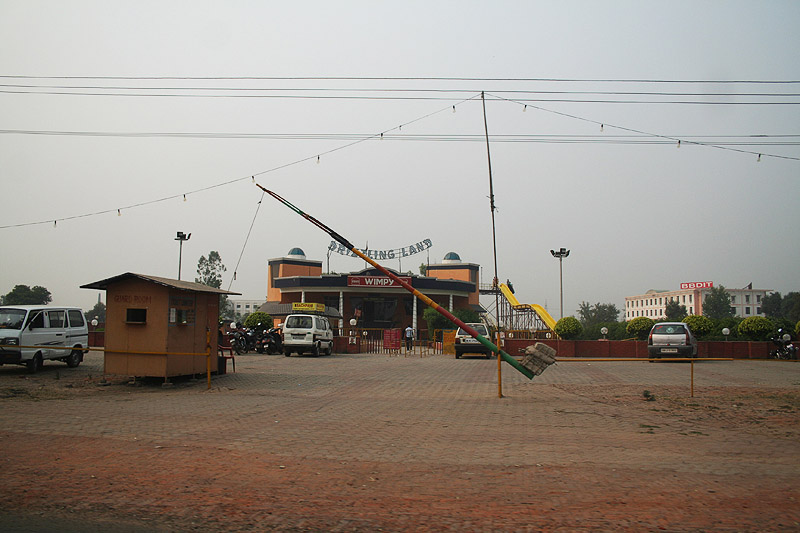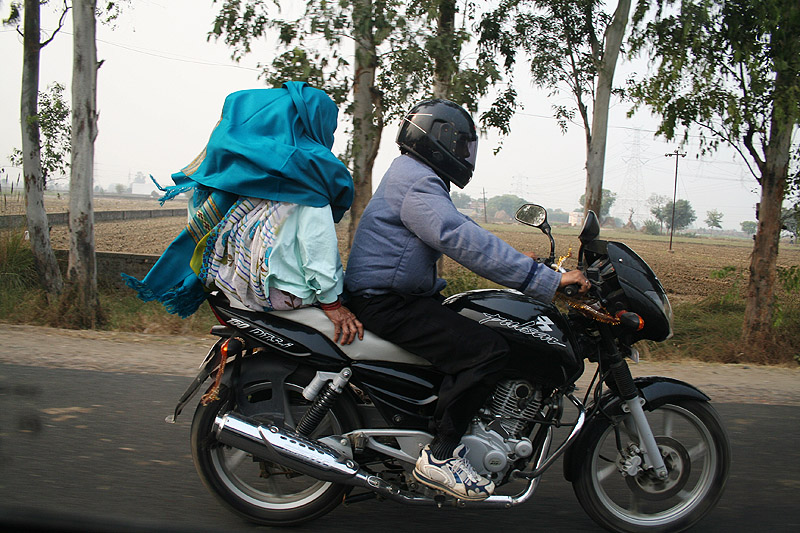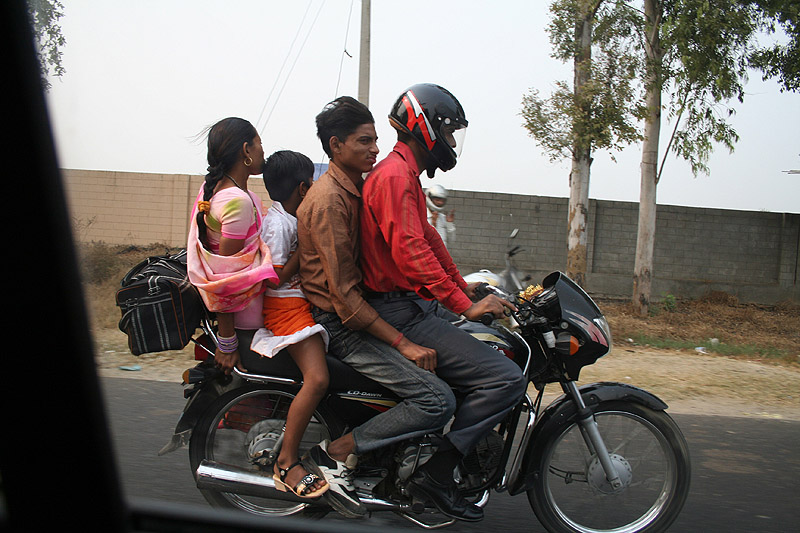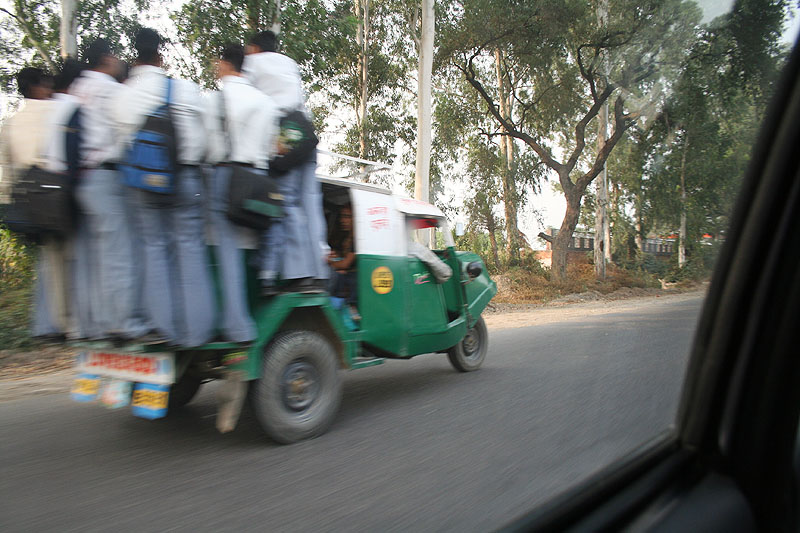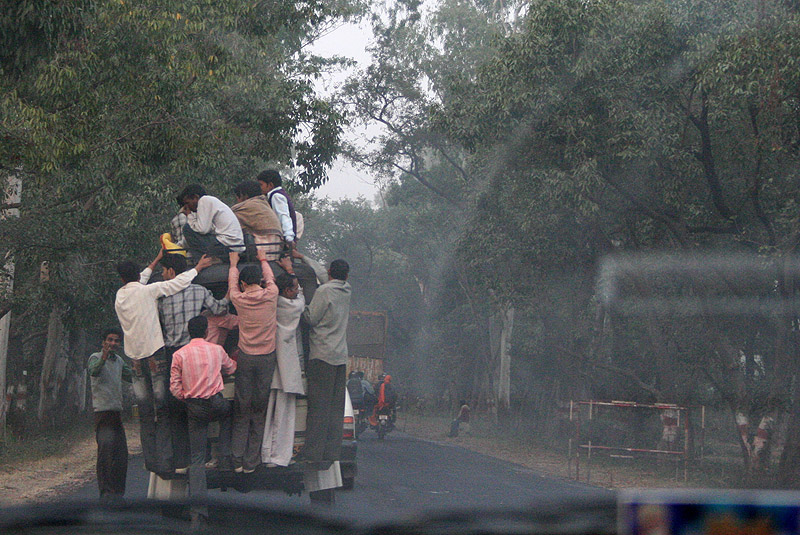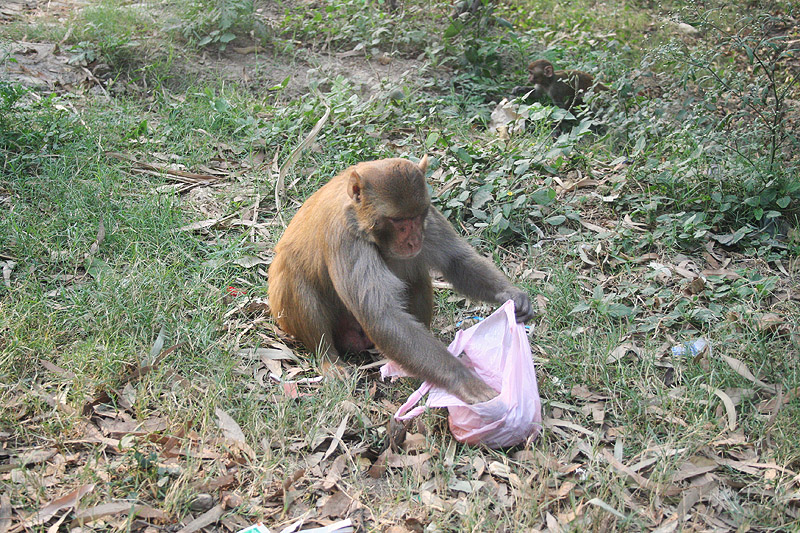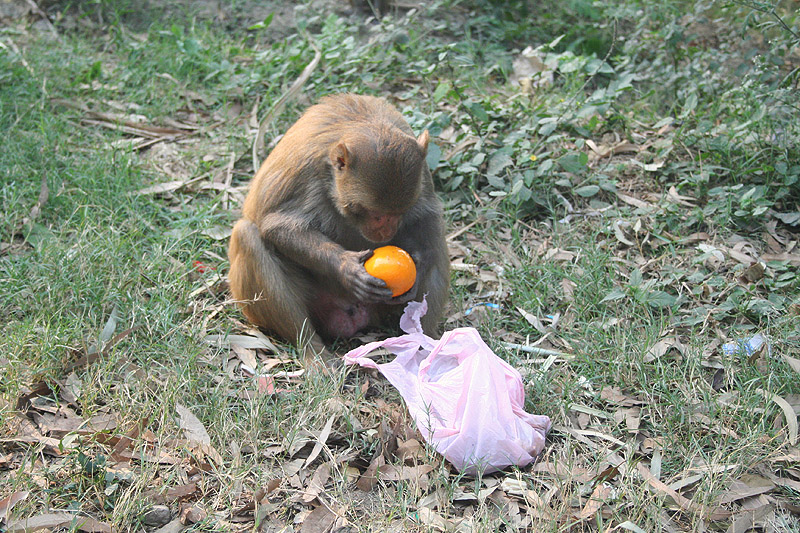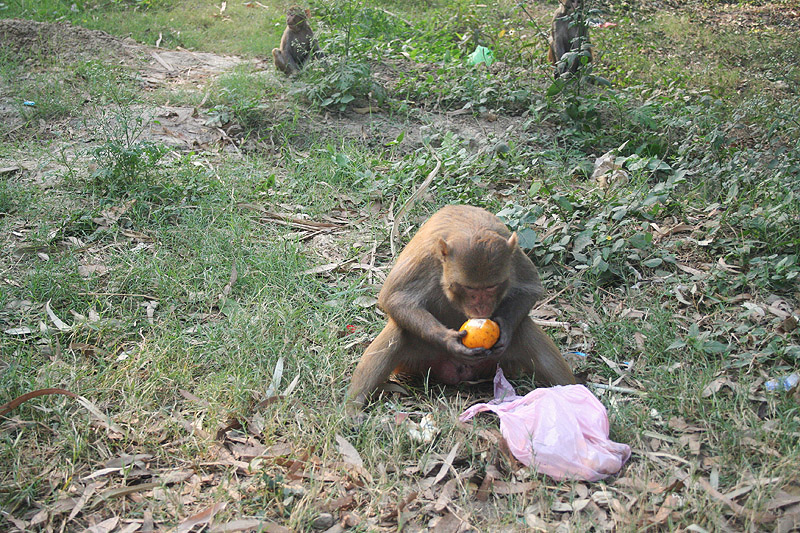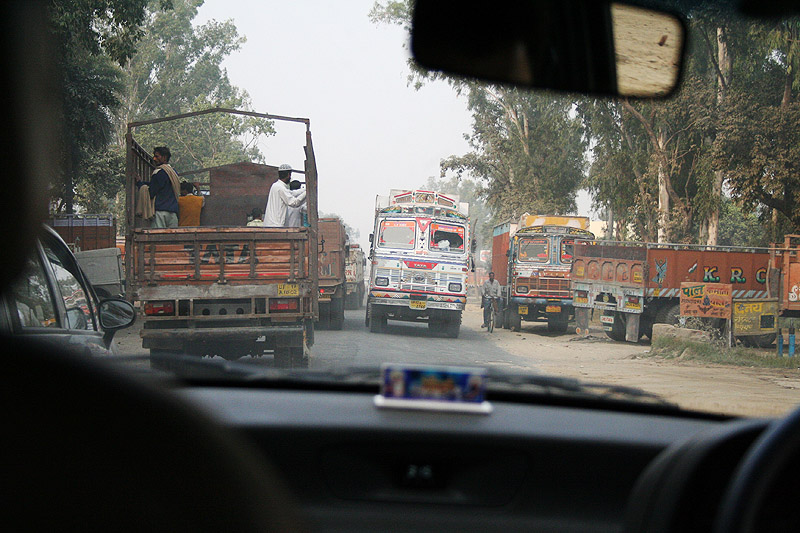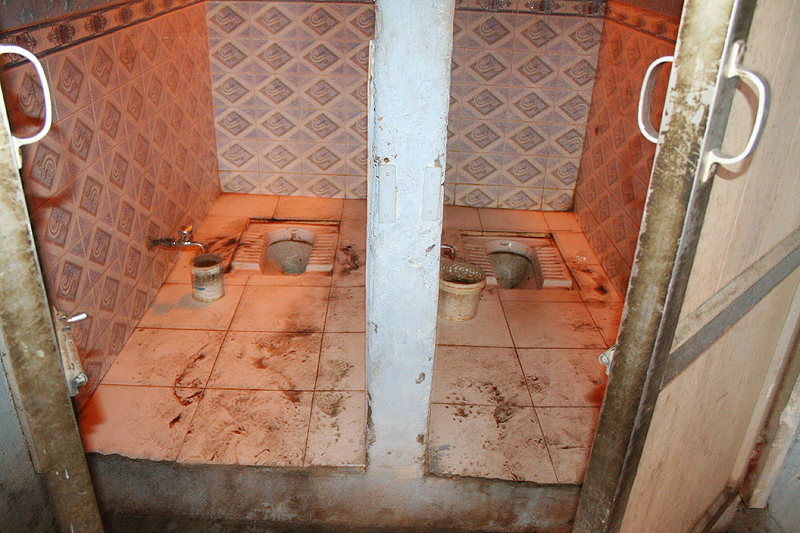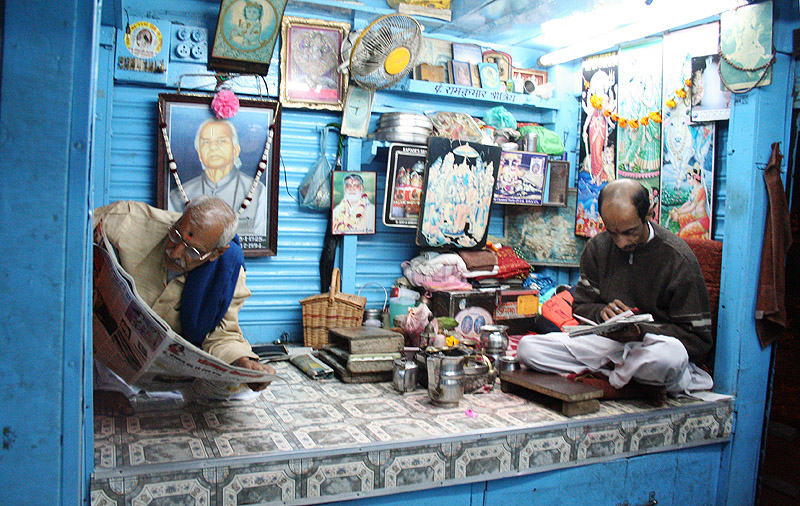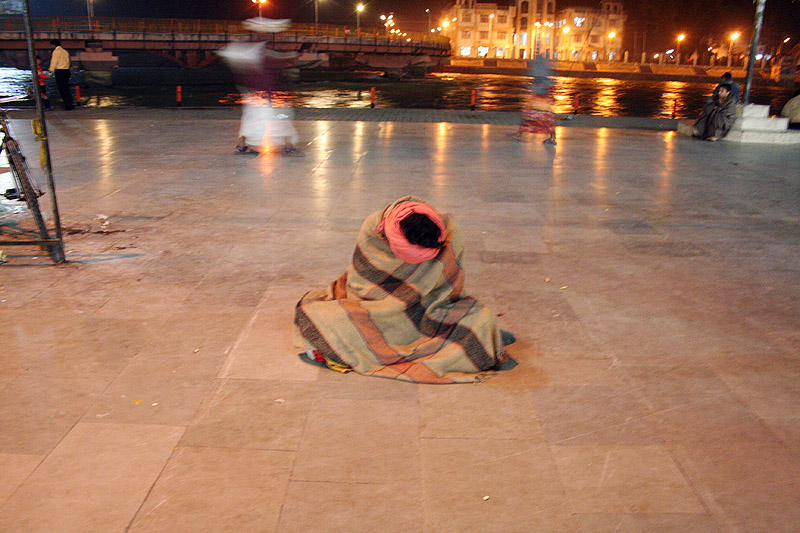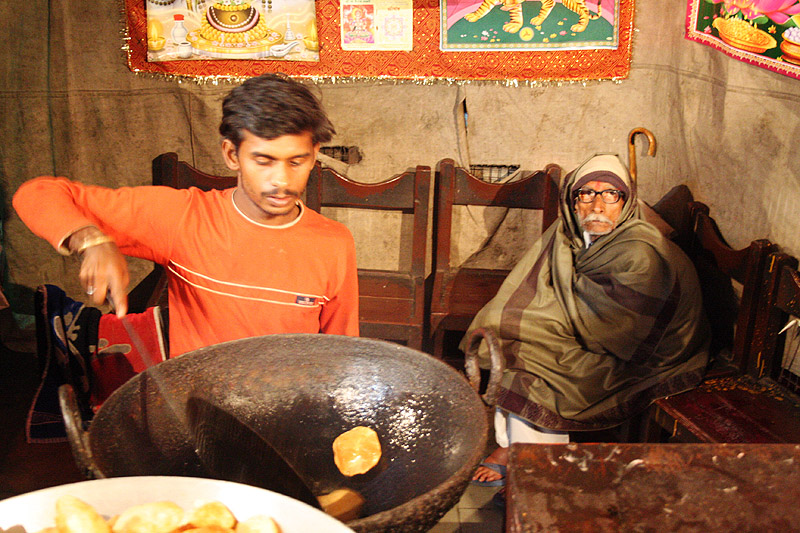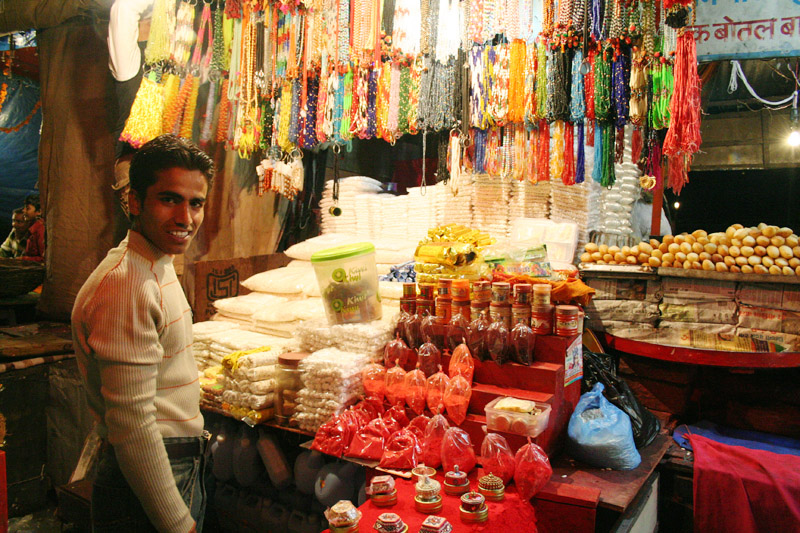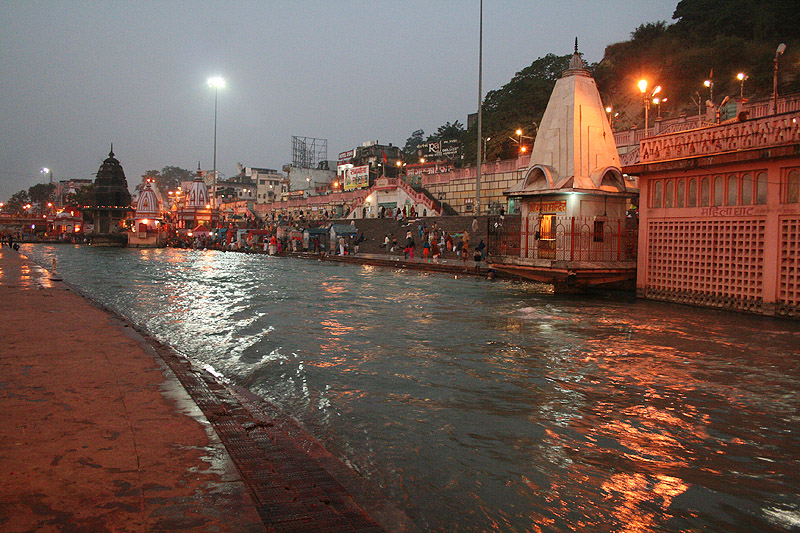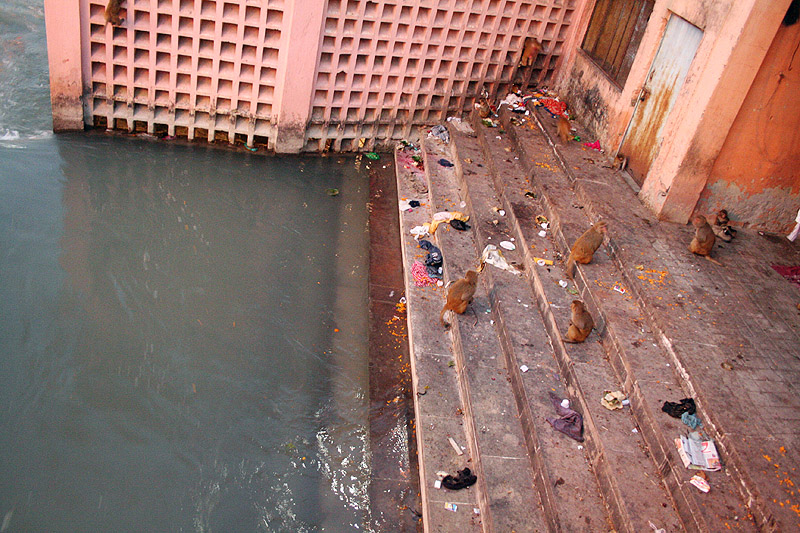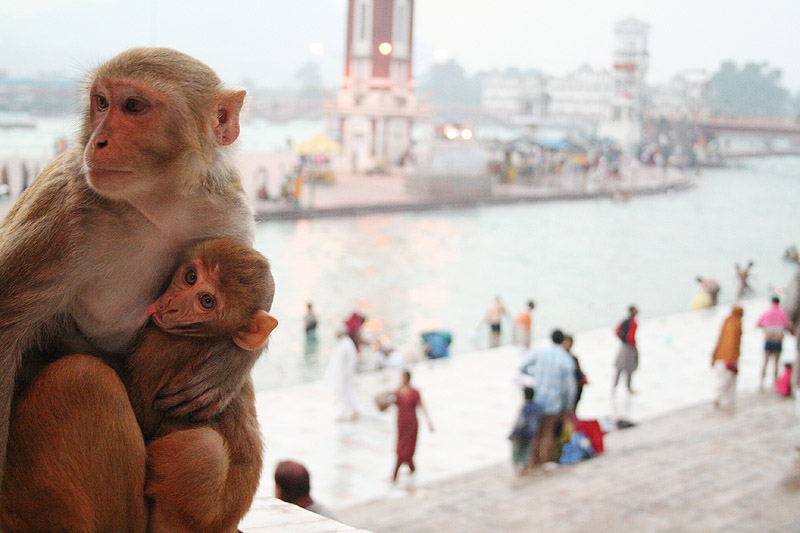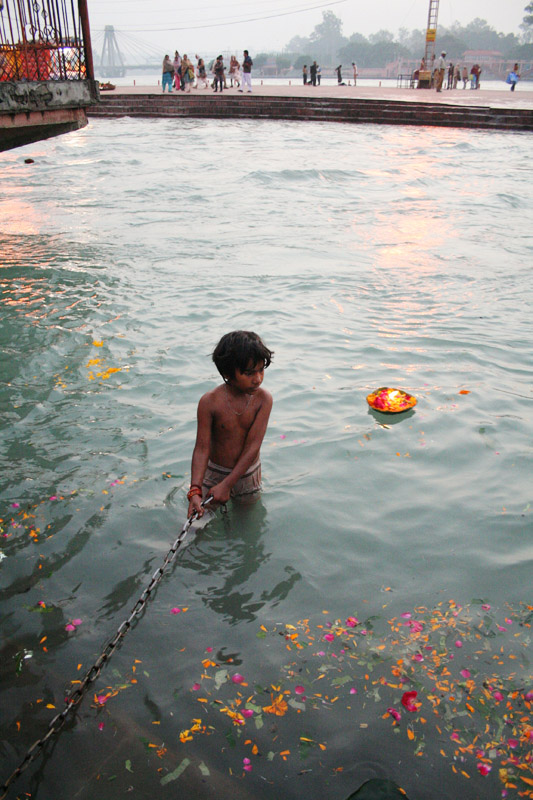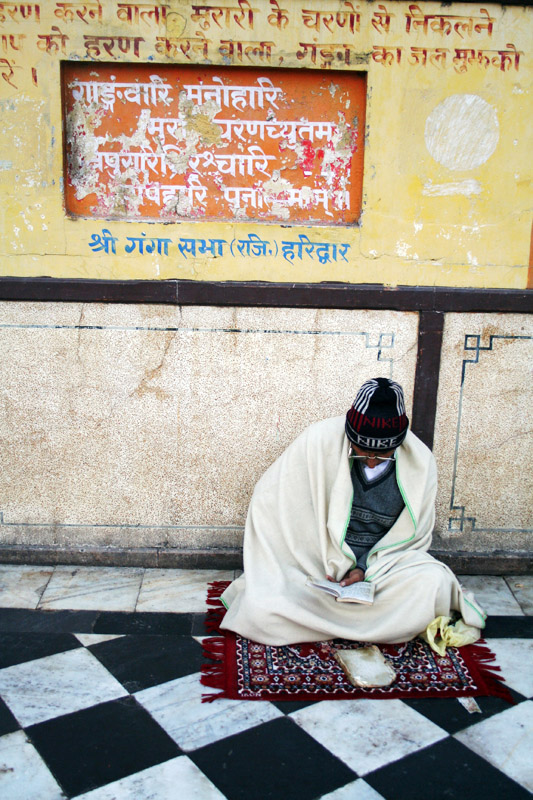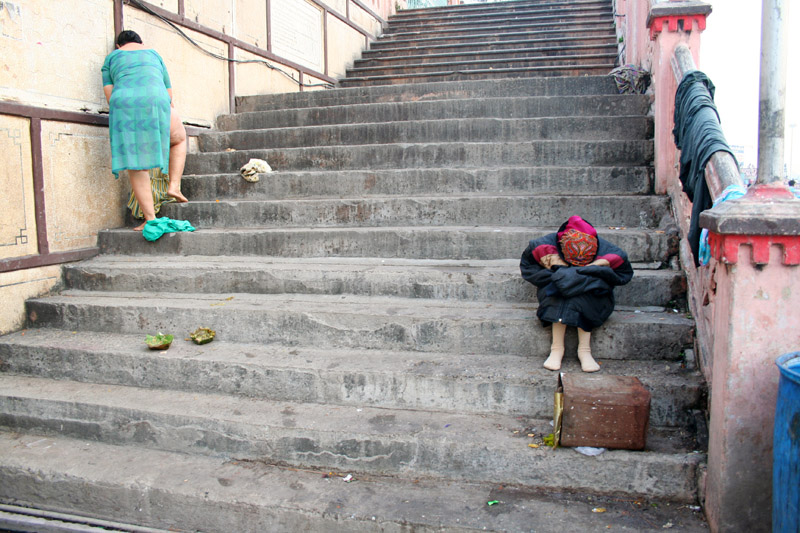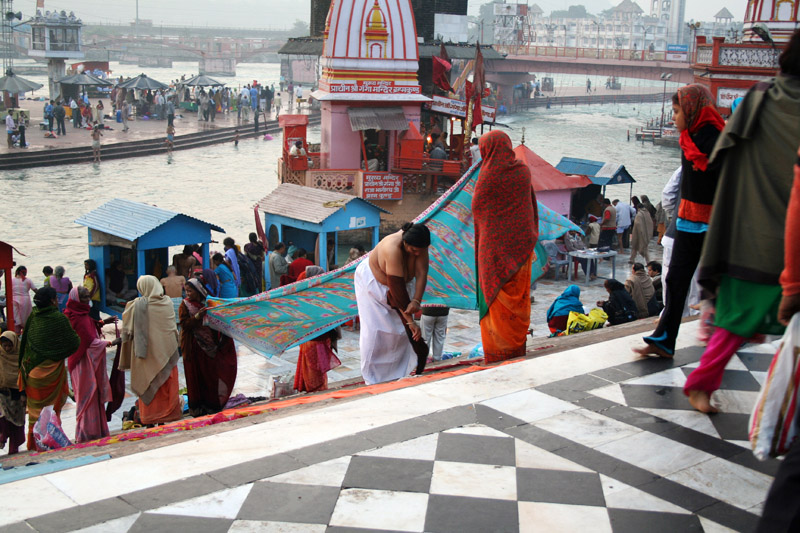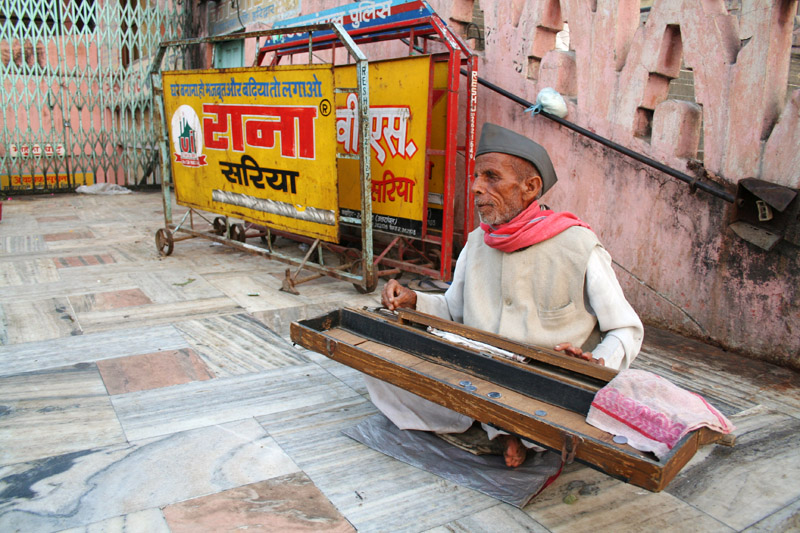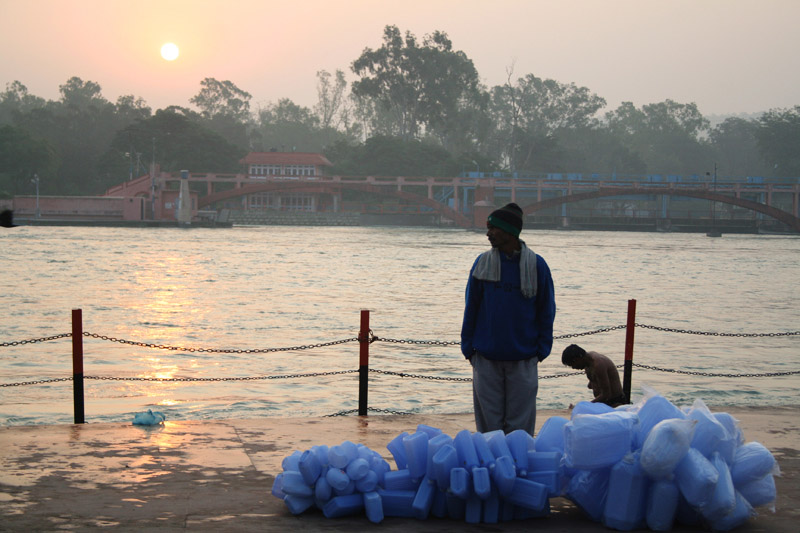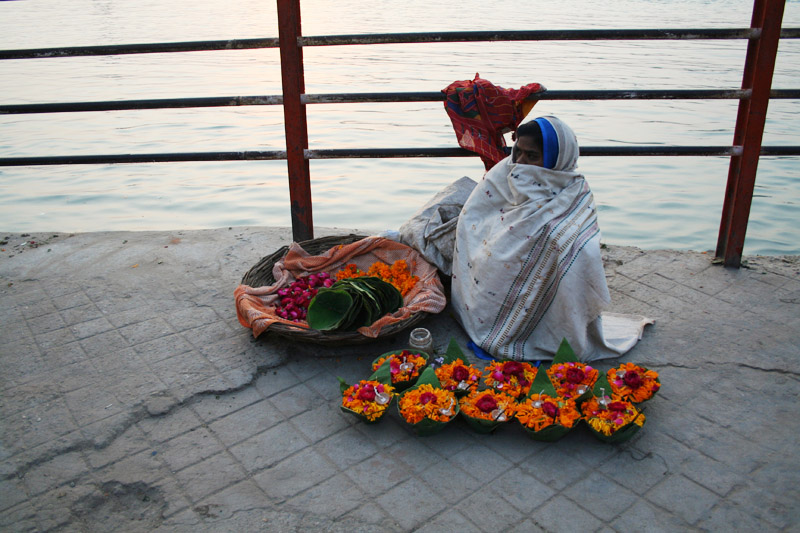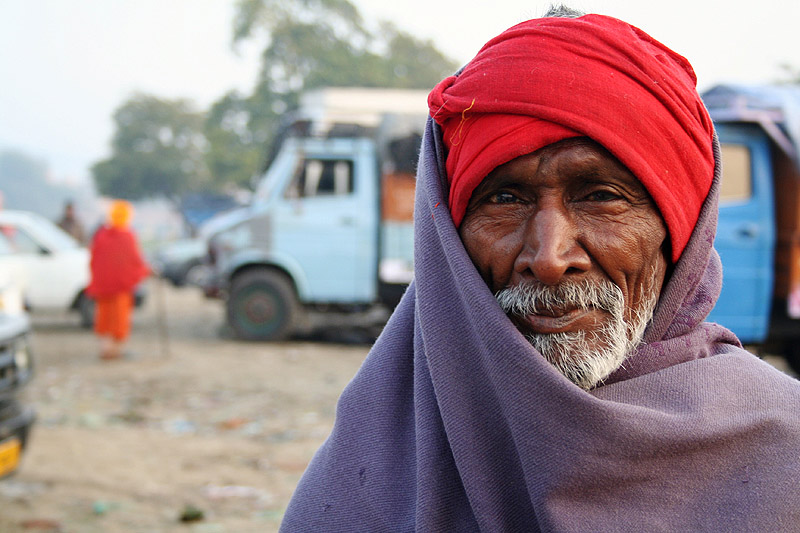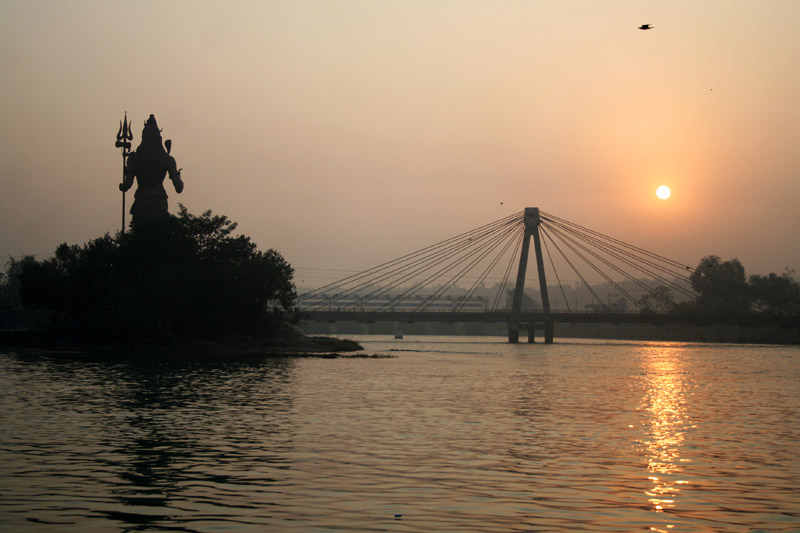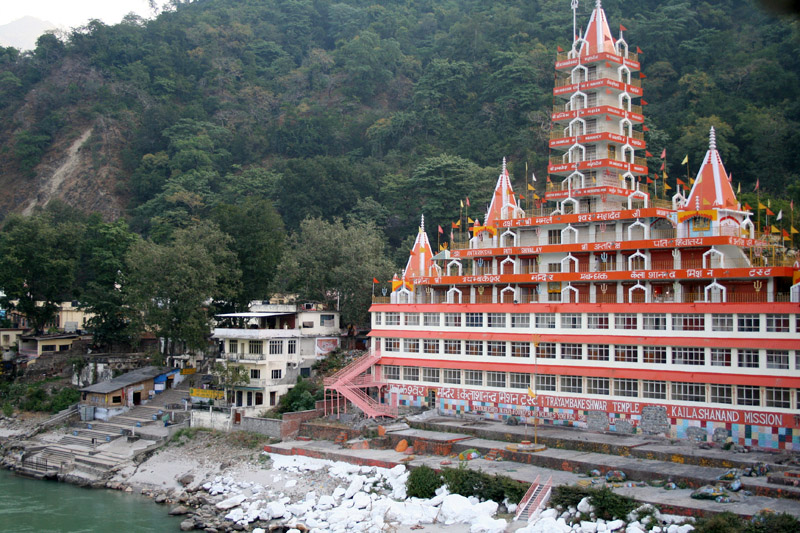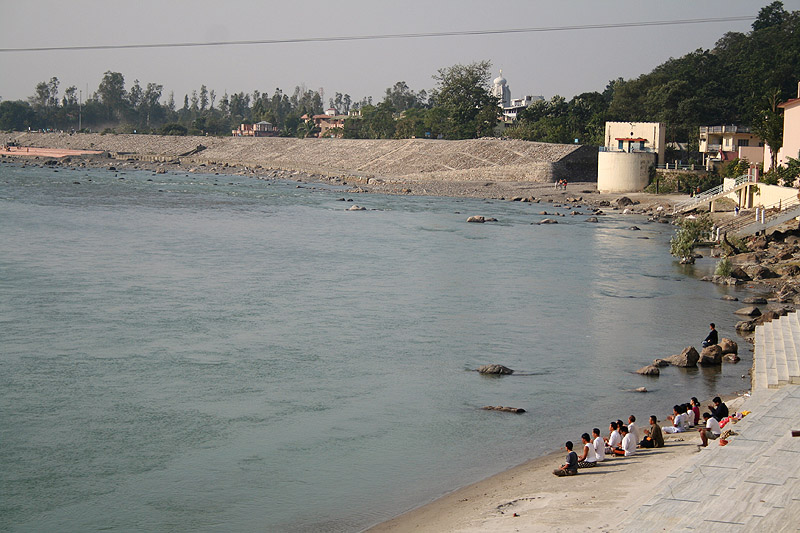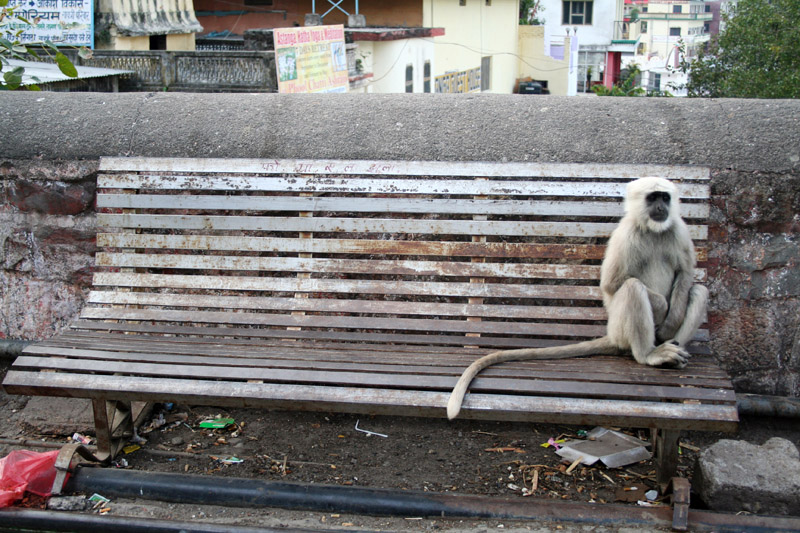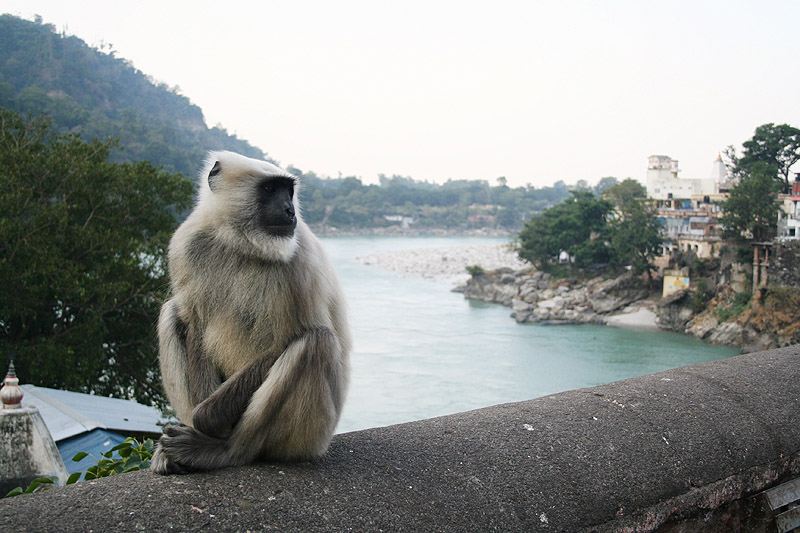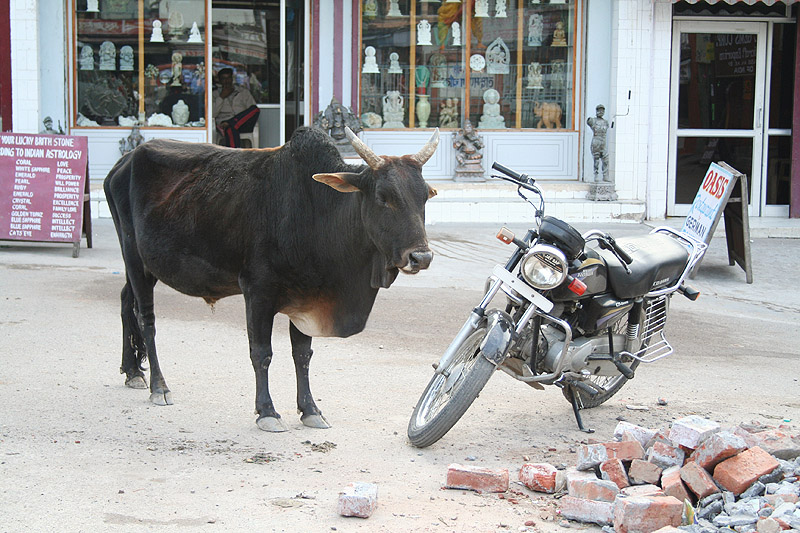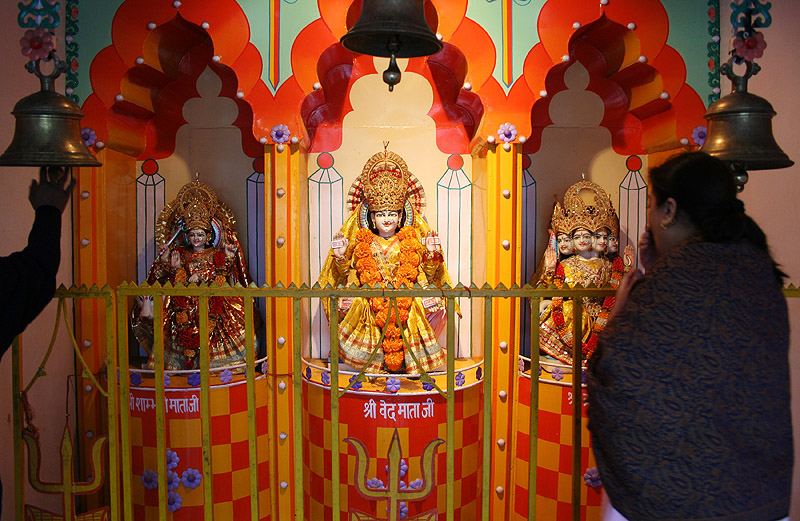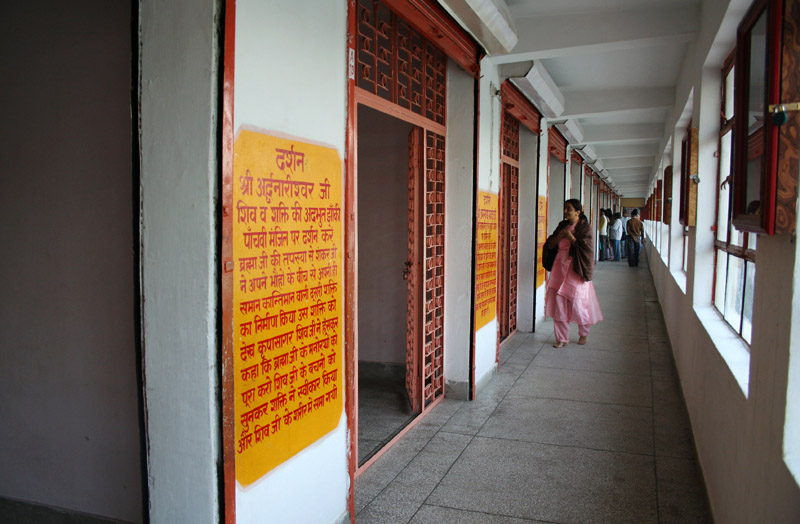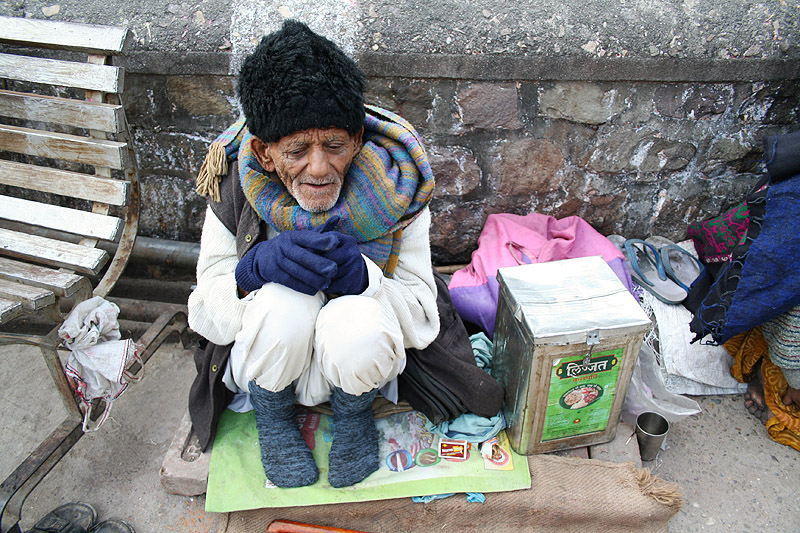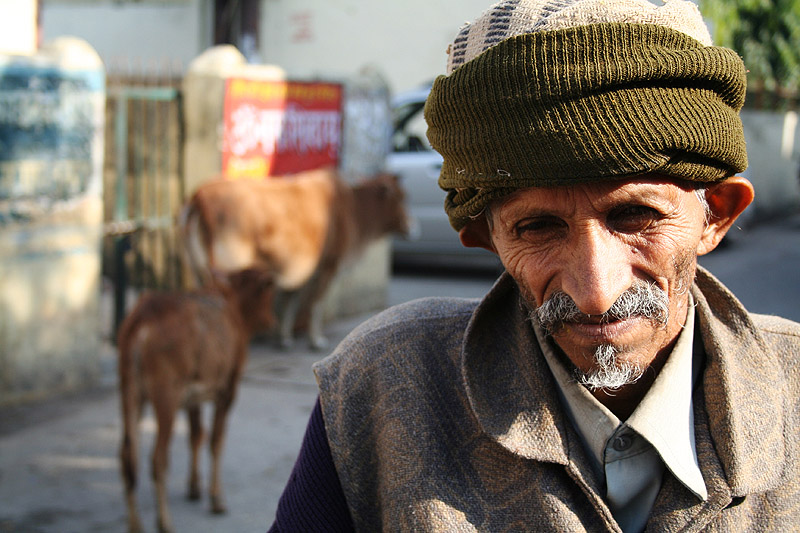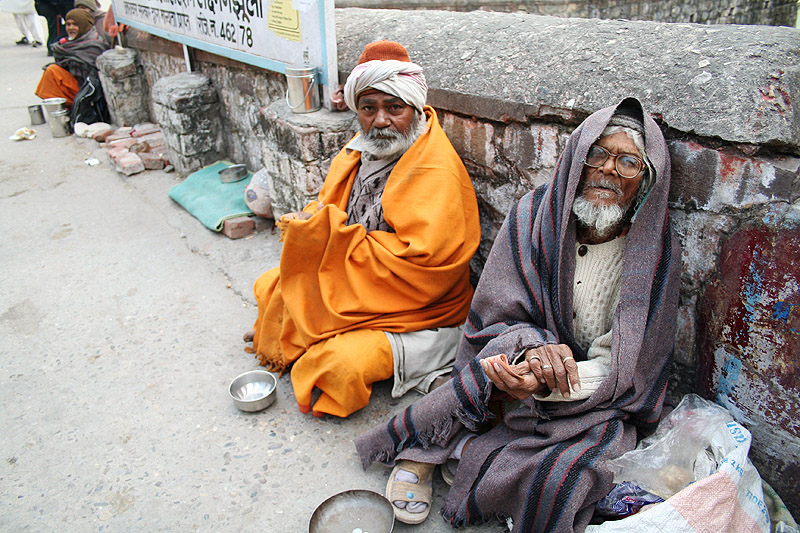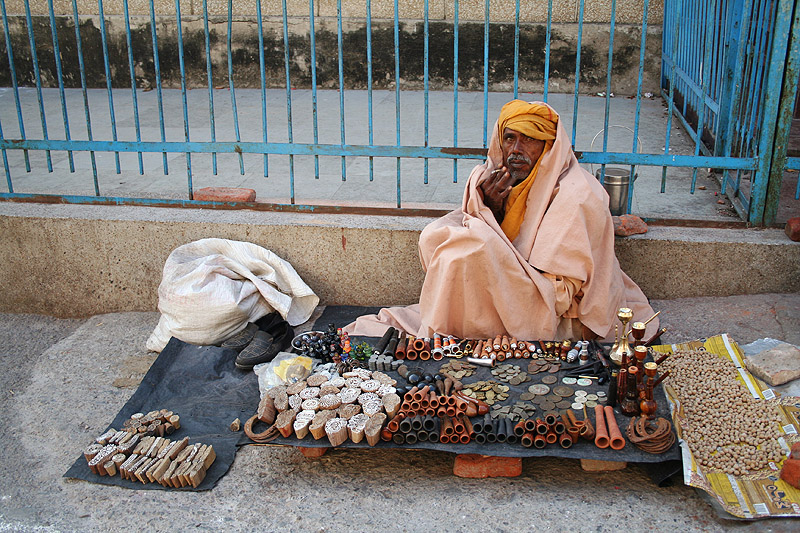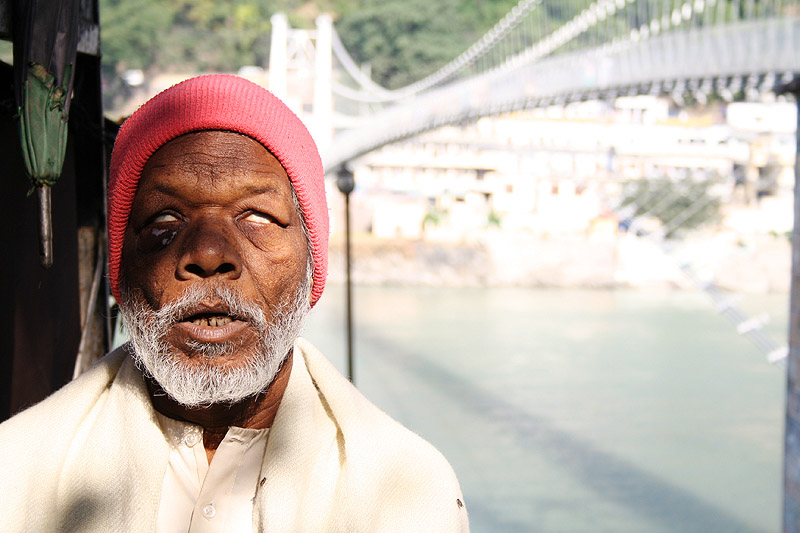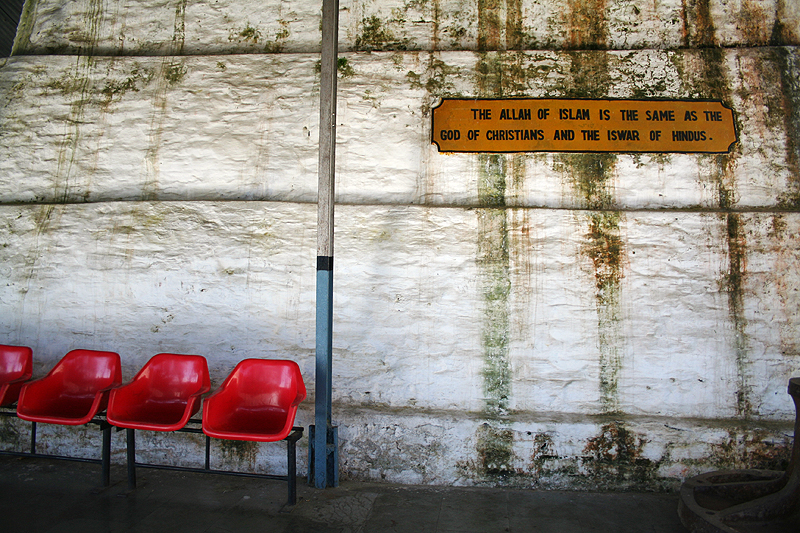The Gateway to God
Onto the second blog of my India trip. Where exactly did I go?
I’ve just figured out how to customise Google Maps – swanky stuff! You can click on any of the markers, as well as the lines to see the distances covered.
For those of you interested in embedding a customised Googlemap into WordPress, it seems as though this is only really possible with WordPress 2.3 on Internet Explorer, not 2.3.1, or Firefox! With 2.3 and even 2.3.1 on Firefox, after inserting the embed HTML provided by Google Maps, editing the blog is no longer possible at all, which means you either have to make sure you’ll never, ever need to edit the blog before adding the embed HTML, or you have to download a map plugin which currently only allows for maps with multiple markers, not lines! Booo. Using the plugin also means having to manually create the map using code alone, not using My Maps on Google Maps, which is pretty shabby, since creating a map on My Maps is very cool and provides info such as the distance between 2 points. WordPress, please fix this bug! So I’m having to type all this using 2.3 on Internet Explorer. Scary.
Anyway, if you can’t see the above map for any reason, just click here.
So I started off in Mumbai, and we then flew to Delhi. I’d wanted to get the train there but that would have taken around 17 hours and there wouldn’t have been enough time for other things.
I have a few pictures left from Mumbai
I thought the sign was funny. This was outside a dingy photo studio where my mum had to get passport pictures in order to get a phone SIM card.  To get a SIM card in India, you have to provide identification, as well as a photo. There are also a few forms to fill out. I never imagined getting a phone SIM in India would be such a lengthy process – here in the UK they give away SIMs for free a lot of the time, or you can just walk into a shop and buy one! On a similar note, I was asked for ID in an internet cafe as well. Apparently this is the norm I was told..
Anyway, back in the photo studio. There was no photobooth you see, so a photographer suddenly appeared with a Nikon dSLR, took some pics of my mum in front of some curtains, and then proceeded to edit the pics on the PC.
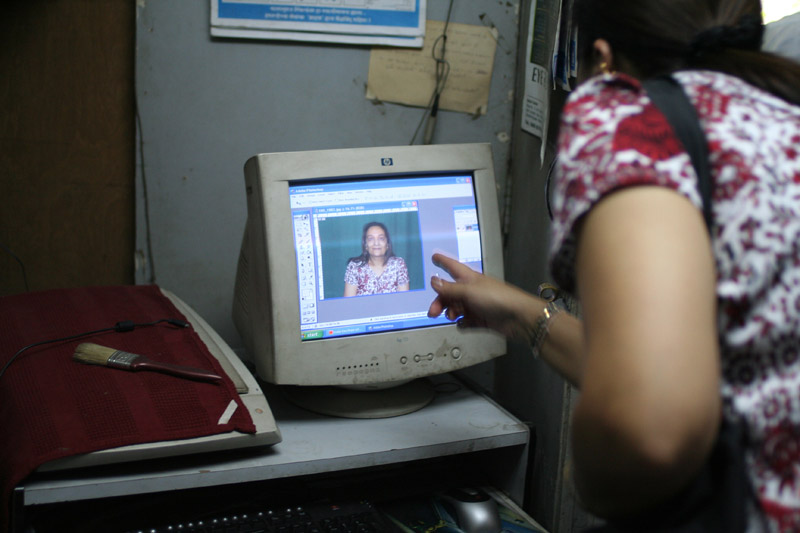
Photoshop seemed a little out of place in this small, shabby photo studio, which I thought was an interesting contrast.Â
Paan being sold on the street
Paan can be a mixture of tobacco, spices and sugar, and is highly popular in India. I suppose it’s the equivalent of chewing gum, but worse for your health!  Personally, I find some of them fairly tasty, but others completely revolting. Generally, I’m not much of a Paan fan.
Taken from the car, I thought this was quite funny
Muchhad means moustache.
Street stalls in Mumbai are open until quite late, and always seem to be busy. Each one is specialised, with this one selling bangles.
This is why I rarely take self-portraits:
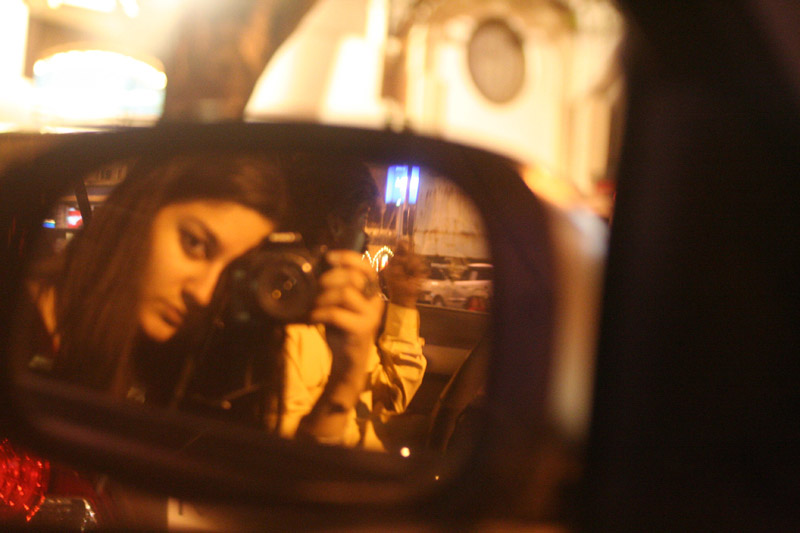
I have no skillZ! That’s Babu next to me, our friend’s driver. He looks like he’s giving the finger in this shot!
Well, that’s it for Mumbai for now.
Next stop – Delhi, the capital of India.  It’s much more westernised than Mumbai (in terms of how people dress, and the roads, shops, etc.). It also lacks the chaos and mayhem of Mumbai, and feels more civilised, which in a way makes it less appealing to me. I’m not sure what this says about me..hmm..!
Damn reflections..
Janpath Market in Delhi is famous for its intricate embroidery.
This woman there recognised me from two years ago!
The people on these stalls are highly skilled at ripping people off. Let me explain what I mean. The items for sale are made by villagers, mostly based in rural Gujarat. They spend most of their time tediously sewing sequins and tiny beads onto blankets, shawls, decorations, cushion covers, bedspreads, etc. Women such as these then buy it off them for peanuts and sell them for a much, much higher price in the market. How do I know this?
Well, it is well-known that in an Indian market, you should halve the price given for an item, and it will still be sold to you. I picked up a decorated stuffed elephant and immediately had someone trying to sell it to me, for 650 rupees (£8 or so). I told her I barely had any room to carry it and I’d take it for 150 rupees. I then walked off, not really intending to buy it. She came after me trying to negotiate but I ignored her. She eventually came back with it already in a bag and said she’d take 150 rupees for it. Hm, so let’s see.. 650 down to 150.. that’s around 1/5 of the original price! These people are not going to sell something unless they make a profit, and obviously if she thought 150 was completely ridiculous she wouldn’t have sold it at all, so for her, this was a good price. One can only assume they buy it for close to nothing from the villagers in Gujarat who actually make these items.
I noticed some tourists negotiating with a lady for a bedspread. The lady quoted 3000 rupees! It was obvious she knew she could get more out of a seemingly ignorant foreigner, so I warned them discreetly to bargain. I mean, 3000 rupees is quite ridiculous, and I don’t like the fact that prices are quoted based on the colour of someone’s skin. Yes, the tourists will be earning more than these sellers, and back in their country the bedspread will be selling for much more, but prices are relative, and people should be aware that they are being ripped off! Immediately the women started a tirade of verbal abuse against me, simply for warning a foreigner to bargain.
They accused me of trying to stop them from making money and taking away business from them. I explained that I’m a foreigner, simply warning another foreigner of the situation, but they refused to listen, claiming that god would punish me for being so cruel to them.
I’m a charitable person and quite happy for people to be making money – but if I see someone being ripped off like this, I’m not going to stay quiet. As it is, the other foreigners were aware that 3000 rupees was a ridiculous amount; they had also been warned by people to at least halve the price! I told the lady this who admitted that they base their prices on whether a person is Indian or not.
They sell lovely things here – perhaps if they had a set price for everyone, they’d end up making more money overall? In any case, I don’t think I’m going to be welcome around here again! When I think about it.. isn’t this what high street stores do, just less obviously? They get people in the far East to produce the goods for a fraction of what they actually sell it for back in the West..
Moving on, we hit the road, headed for Haridwar and Rishikesh, two of the most holiest Hindu places in India.
Along the way, I took some shots out of the window, something I’m quite a fan of it seems!
They have Wimpy!Â
I like how only the driver has a helmet.
We came across monkeys! We stopped the car but were warned not to get out, because these animals will grab anything (I found this out by experience later in the trip), and they could attack as they’re not as accustomed to humans compared to monkeys in other areas such as temples which are frequented by humans regularly.
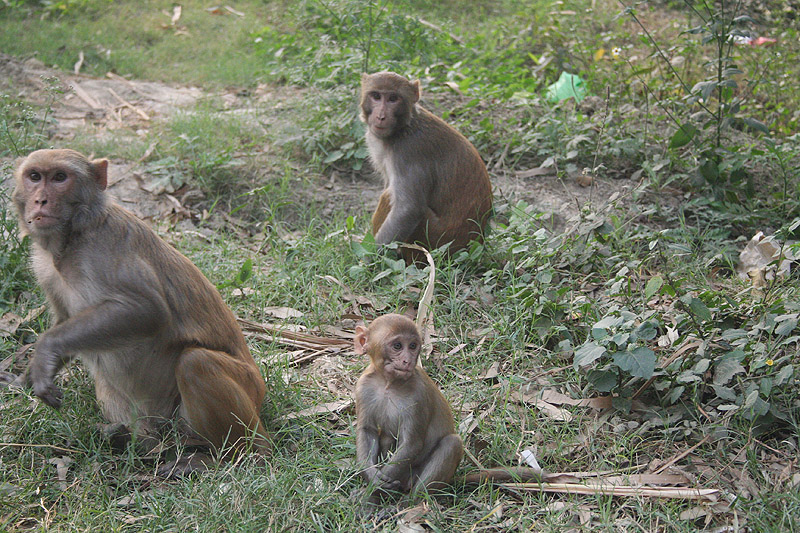
Conveniently we had some fruit on us.
Indian roads are a nightmare. I wish I’d recorded the sound of being on the road, which consists of constant honking. There’s no concept of lanes – people don’t wear seatbelts or helmets, overtake dangerously and don’t let others cut in front, which, combined together is highly risky! A lot of cars don’t even have side mirrors.Â
Funnily enough, I didn’t see a single case of road rage. People just get on with driving, and even when they almost crash into another vehicle, there’s no sign of anger at all. They barely flinch. I love how the trucks are decorated with lights and paintings.  In comparison, driving in London seems quite boring! Of course, I wouldn’t attempt driving myself in India unless I really had to!
One thing I absolutely loved about travelling by road are the little tea places which have amazing food and deliciously sweet masala tea. Often they’d be run by just one person in a deserted stall with nothing around, but their cooking skills were just amazing. I must have been so intrigued by all the food I ate that I don’t think I took a single picture of these wonderful little roadside places. :/
I did take a picture of this though:
I didn’t use it.
We got to Haridwar in the evening.
We went back early the next morning, before sunrise.
Haridwar translates to gateway to god, and it’s regarded as one of the seven holiest places to Hindus. People come to this ancient place to bathe in the River Ganges, and doing so is thought to wash away one’s sins.
The water was freezing! I mean, it was around 6:30am, yet some of the people here didn’t seem to be discouraged by the temperature.
There were many temples dotted around the area.
There were people selling bottles for the public to fill up with water from the Ganges to take with them. People often drink the water as well. Of course the Ganges is highly polluted, but telling this to a devout Hindu could easily offend them. I was given some of the river water in a temple to drink, which I did. It was surprisingly sweet and tasty.
There were also many people like this selling flowers which are put into the river as part of a blessing ritual.
From Haridwar it was a half hour drive to another holy place by the river, Rishikesh.
It is here that the Ganges leaves the foothills of the Himalayas, which is why it’s also known as the gateway to the Himalayas.
Rishikesh is often referred to as the yoga centre of the world as well.
The temple a few shots above has 13 levels,with numerous rooms containing statues of Hindu gods.
It was an enlightening experience visiting these two holy places. Religion plays a huge part in the lives of Indians, and whatever your beliefs, there is a great atmosphere here.
Next blog – Shimla, the ‘Queen of Hills’ in the north-west Himalayas..
